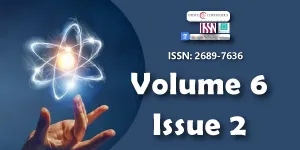Open path theory: Pattern and structure in prime numbers
Main Article Content
Abstract
The Open Path theory, supported by experimental data, is presented. The main hypothesis proposes that Prime Numbers's positions are determined by previous Prime Numbers as well as their spacing, in a complex, but deterministic way. The concepts of Open Path, Perfect Space, and Primorial Perfect Space are introduced. The Open Path theory can predict prime gaps of any minimum predetermined size. Two rudimentary algorithms based on this theory are presented. The first algorithm returns a sample (a few hundredth of numbers) containing 25 % of Prime Numbers at distances above 1011. The mirrored sample gives a similar percentage of Prime Numbers. The algorithm execution time is of a few milliseconds. The second algorithm presented determines if a number belonging to a Perfect Space is a composite number or a Prime Number.
Downloads
Article Details
Copyright (c) 2023 Real D.

This work is licensed under a Creative Commons Attribution 4.0 International License.
Licensing and protecting the author rights is the central aim and core of the publishing business. Peertechz dedicates itself in making it easier for people to share and build upon the work of others while maintaining consistency with the rules of copyright. Peertechz licensing terms are formulated to facilitate reuse of the manuscripts published in journals to take maximum advantage of Open Access publication and for the purpose of disseminating knowledge.
We support 'libre' open access, which defines Open Access in true terms as free of charge online access along with usage rights. The usage rights are granted through the use of specific Creative Commons license.
Peertechz accomplice with- [CC BY 4.0]
Explanation
'CC' stands for Creative Commons license. 'BY' symbolizes that users have provided attribution to the creator that the published manuscripts can be used or shared. This license allows for redistribution, commercial and non-commercial, as long as it is passed along unchanged and in whole, with credit to the author.
Please take in notification that Creative Commons user licenses are non-revocable. We recommend authors to check if their funding body requires a specific license.
With this license, the authors are allowed that after publishing with Peertechz, they can share their research by posting a free draft copy of their article to any repository or website.
'CC BY' license observance:
|
License Name |
Permission to read and download |
Permission to display in a repository |
Permission to translate |
Commercial uses of manuscript |
|
CC BY 4.0 |
Yes |
Yes |
Yes |
Yes |
The authors please note that Creative Commons license is focused on making creative works available for discovery and reuse. Creative Commons licenses provide an alternative to standard copyrights, allowing authors to specify ways that their works can be used without having to grant permission for each individual request. Others who want to reserve all of their rights under copyright law should not use CC licenses.
Havil J, Gamma J. Exploring euler’s constant. 2003 .
Granville A. Harald Cramer and the distribution of prime numbers, Scandinavian Actuarial Journal. 1995; 1:12–28.
Cranball R. Cranball CPR. Prime Numbers A Computational Perspective. Springer, 2005.
Green B, Tao T. The primes contain arbitrarily long arithmetic progressions, Ann Math.2004; 167. doi 10.4007/annals.2008.167.481.
Porras J, Andrade C. The formation of prime numbers and the solution for Goldbach's conjectures, World Open Journal of Advanced Mathematics. 2014; 2:1–32.
Porras J, Ferreira P. The pattern of prime numbers, Applied Mathematics. 08, 2017; 180–192. doi: 10.4236/am.2017.82015 .

